As summer approaches the chalkstream water levels peak and they become amazingly clear you can think that the fishing gets too challenging, but this is by no means the end of great fishing. In the summer months a host of other interesting opportunities develop. Long bright days and crystal clear water offers some great sight fishing and those willing to fish earlier and later in the day can be treated some super dry fly sport.
The fishing is often more technical than earlier in the season so here are five tips to help have more success on those balmy summer days.
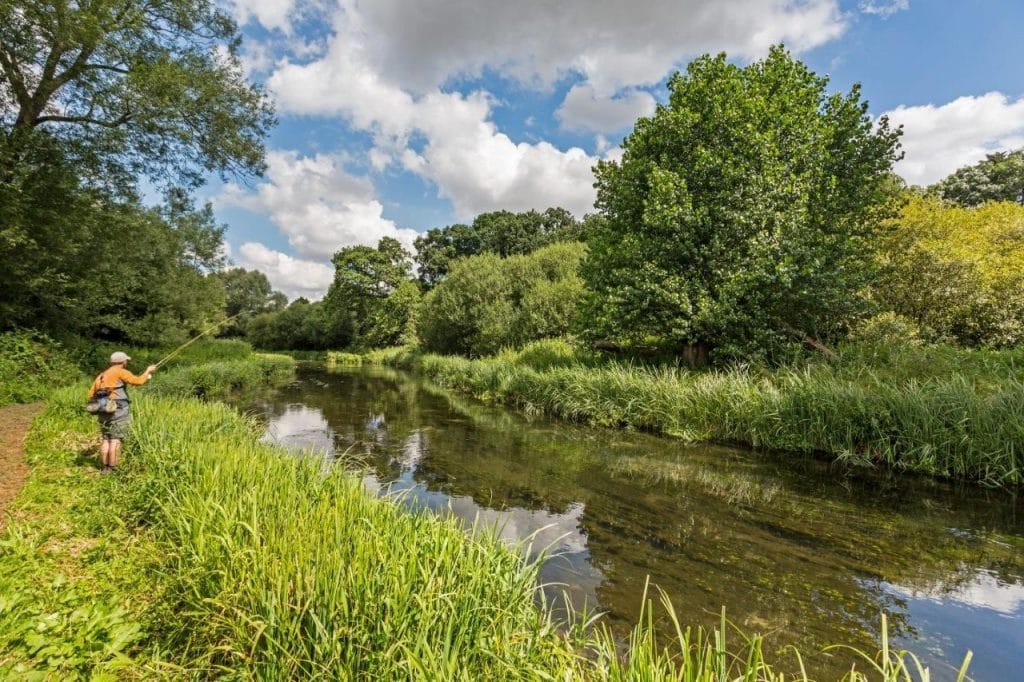
1. When To Fish
To have the best dry fly fishing it is important to fish when the sun is lower and conditions are less bright. Of course, this generally means fishing earlier and later in the day. Although great fishing can still be had when it is bright and sunny these conditions tend to lend themselves to sight fishing with nymphs (where permitted to do so).
As the light drops many of the trout start to move into shallower water on top on weed beds to make the most of the evening hatch, or spinner fall. Often, trout start the evening by feeding on the spent olives that have returned to the river at dusk. As the evening progresses their attention may turn towards sedges. A good way of discovering what the fish are feeding on when the light is poor is by observing the nature of the rises. If the rises are very splashy it is likely the fish are feeding on sedges. If the fish are sipping and rises are gentle it is likely they are feeding on either spent olives or midges, so a smaller fly will be required.
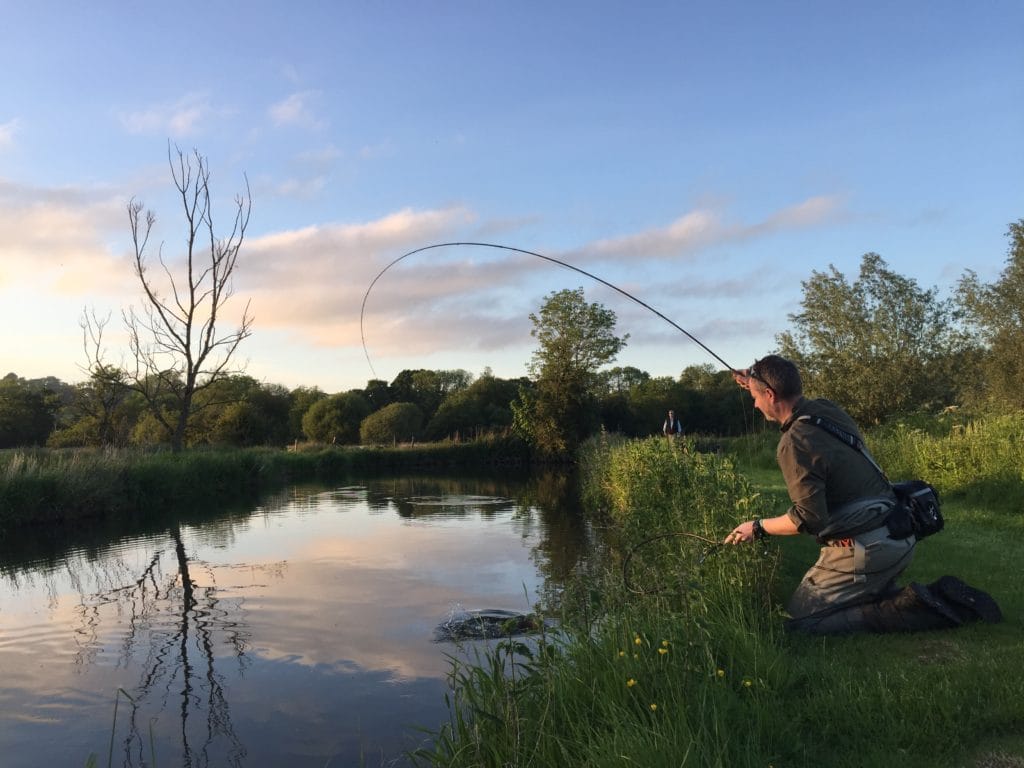
2. Scale Down
Unlike during the mayfly period, you will have to scale down your fly size to match the hatch. The bulk of upwing hatches during the summer period are made up smaller species such as pale watery’s, blue winged olives and iron blues. On the whole these can be imitated in sizes sixteen to twenty. Even when fishing with nymphs, smaller is often better as the water is likely to be shallower and very clear. Smaller nymphs will not only match the current hatches better, but will also land more softly so are less likely to spook wary summertime fish.
Low and clear water calls for longer leaders. The length will still depend on the size of the stream or river you are fishing. As a rule of thumb use as long a leader as you are comfortable casting. A leader of at least twelve foot in length will be of great benefit when presenting the fly to shy fish. To allow the small flies you will be using to drift naturally and without drag it is also necessary to scale down the tippet size. 6X is a good starting point and you can always go lighter if need be. However, I would advise caution against fishing too light as there is always the chance of hooking into a large fish and it is important to be able to play fish as quickly and humanly as possible.
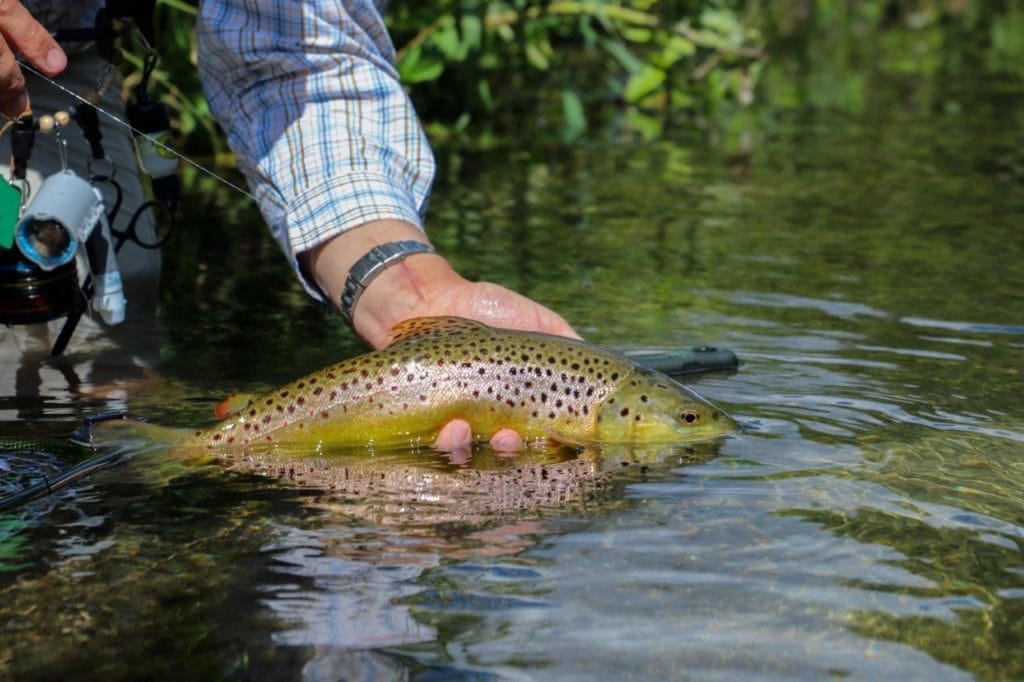
3. Terrestrials
Summer hatches are not only restricted to the domain of small upwing fly species. It is also a time where excellent sport can be had using terrestrial patterns. The farmers have been cutting grass so poorly flying daddy long legs will be hovering close to the river. This combined with small black beetles sporadically falling from overhanging branches can lead to some great dry fly fishing. So, don’t leave home without a few daddy and foam beetle patterns.
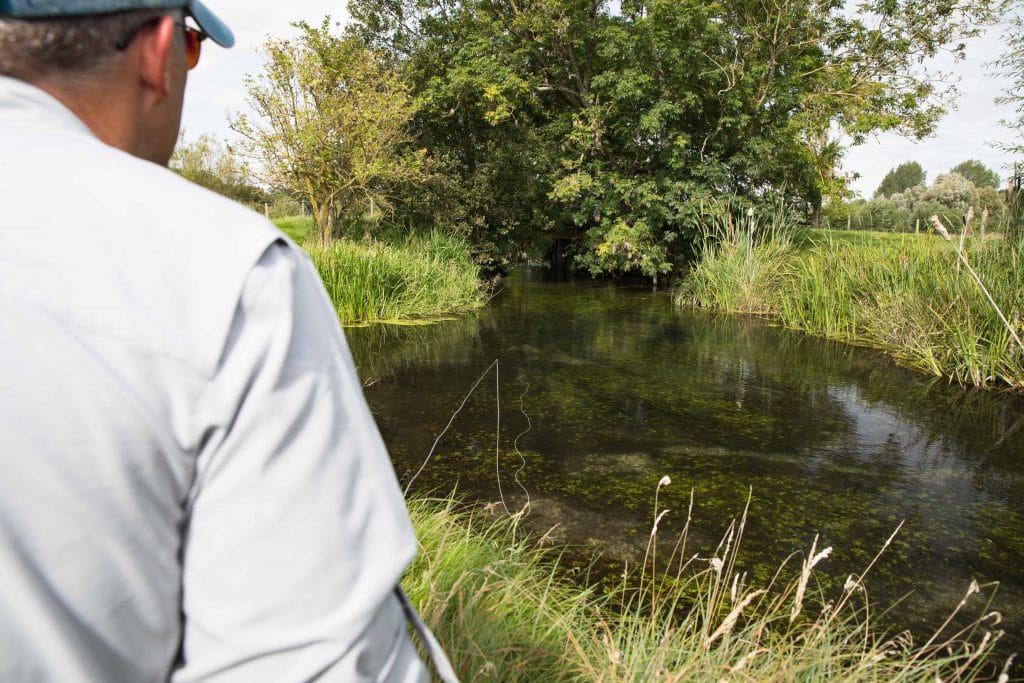
4. Nymph Fishing
As the summer season approaches many of the chalkstream beats begin to allow upstream nymph fishing. On bright days sight with nymphs are often the most effective method. This is a rewarding and technical form of fishing that requires sharp eyes and plenty of concentration. If the visibility is good, try fishing without an indicator and watch the mouth of the fish carefully to register the take. Fishing with no indicator allows for the best presentation and the most natural drift. If you do need to use an indicator a small tuft of sheep’s wool works well, it lands softly, is visible and looks natural.
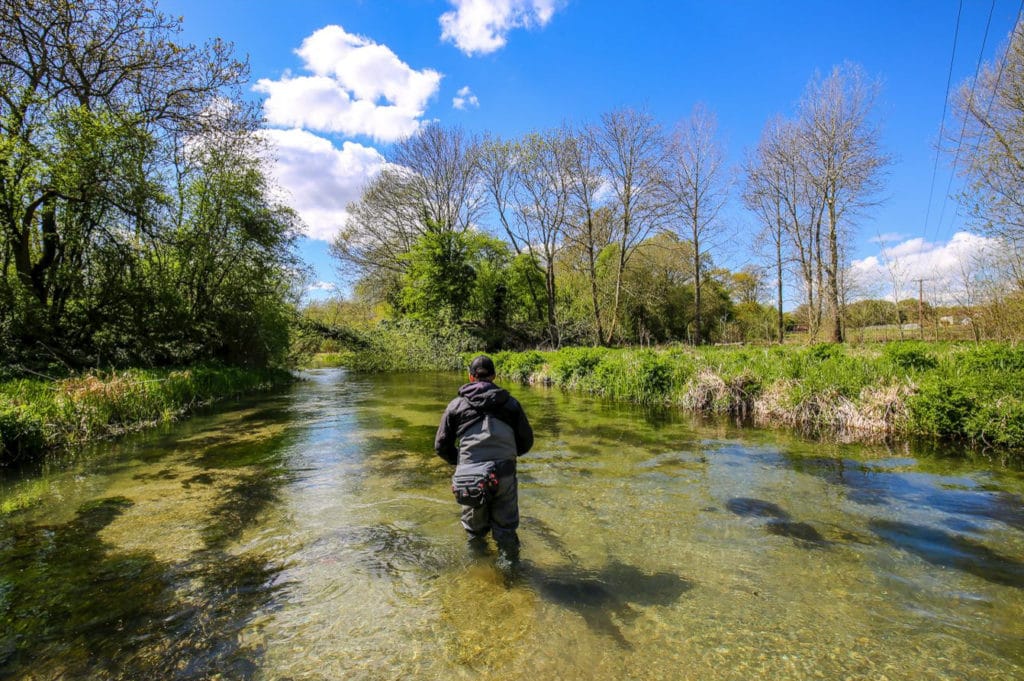
5. Be A Ninja
If the water is low and clear you must move slowly and carefully to make sure you spook as little as possible. Keep a low profile and try to minimize false casting over the fish you are targeting. Whether you are casting to a rising fish or sight fishing take time to observe the fish’s behaviour. This will inform you which technique and pattern will be best suited to cover that fish. Always bear in mind that your first cast will give you the best opportunity of a hook up, so make the first shot count.
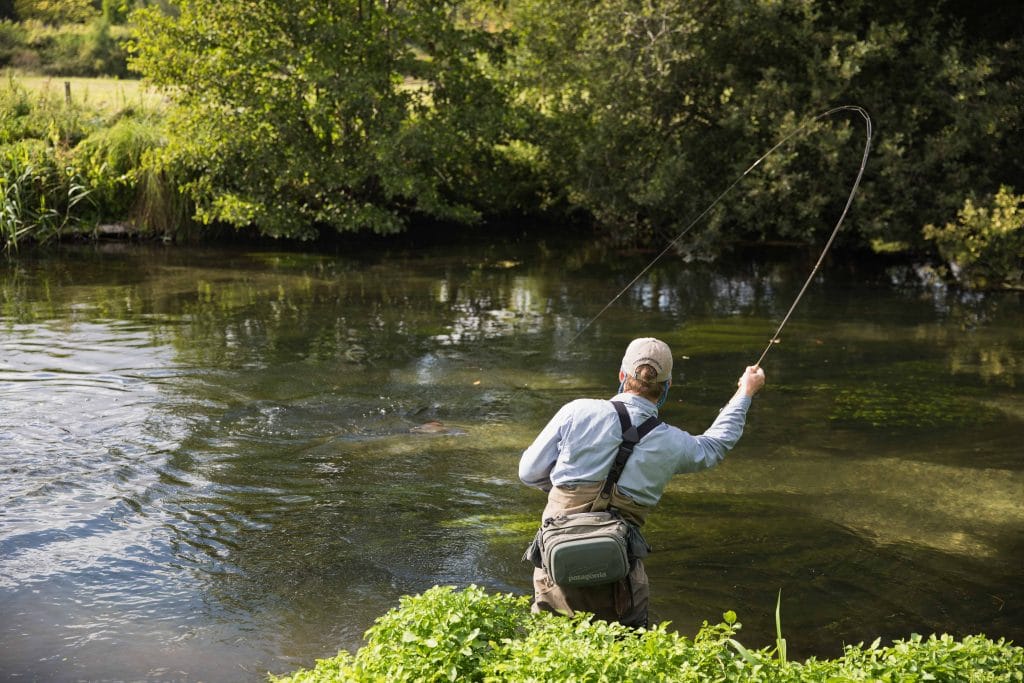
If you would like more information about chalkstream fly fishing please do not hesitate to email us or call us on +44(0)1980 847389.
